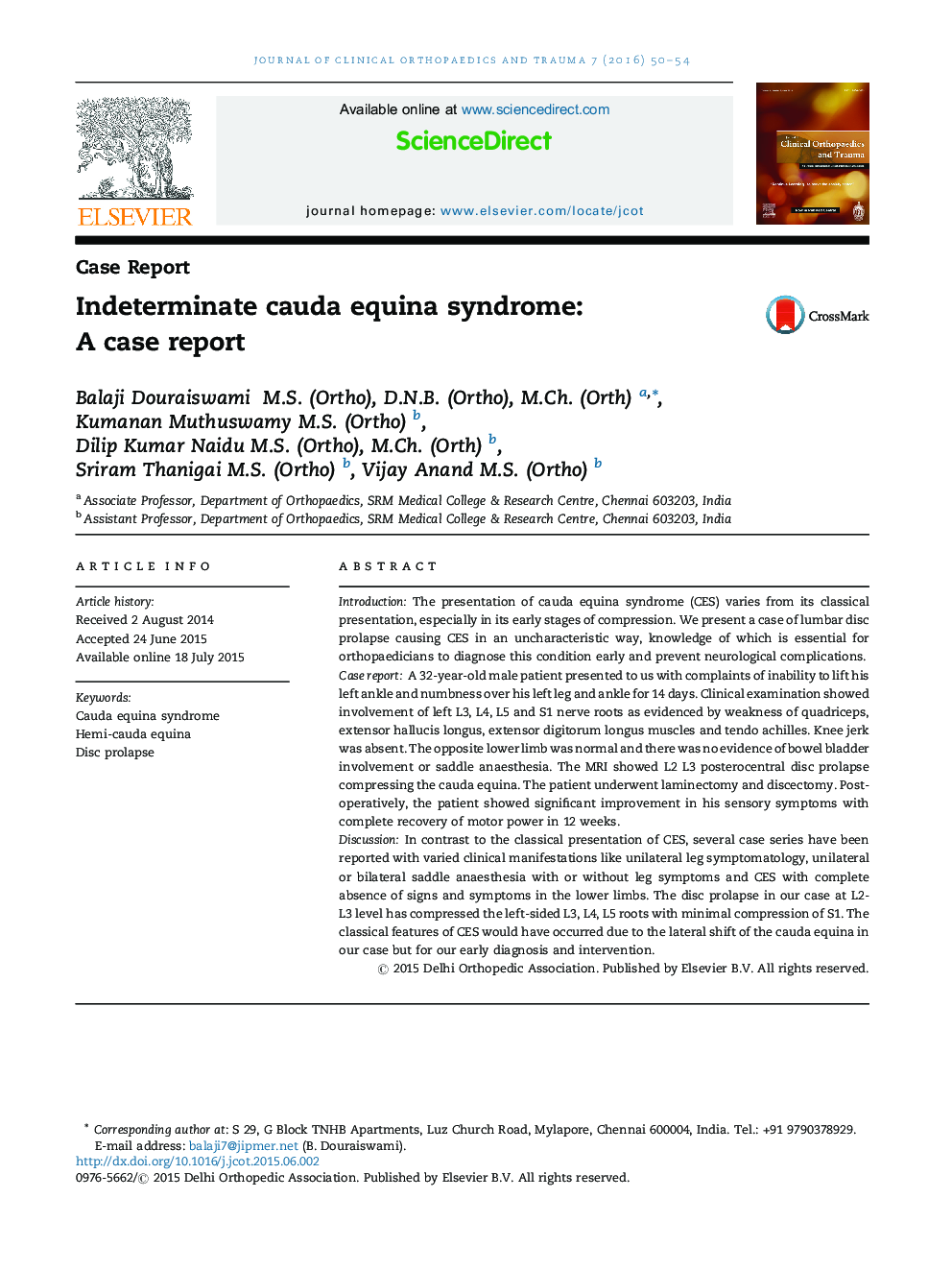| Article ID | Journal | Published Year | Pages | File Type |
|---|---|---|---|---|
| 3245190 | Journal of Clinical Orthopaedics and Trauma | 2016 | 5 Pages |
IntroductionThe presentation of cauda equina syndrome (CES) varies from its classical presentation, especially in its early stages of compression. We present a case of lumbar disc prolapse causing CES in an uncharacteristic way, knowledge of which is essential for orthopaedicians to diagnose this condition early and prevent neurological complications.Case reportA 32-year-old male patient presented to us with complaints of inability to lift his left ankle and numbness over his left leg and ankle for 14 days. Clinical examination showed involvement of left L3, L4, L5 and S1 nerve roots as evidenced by weakness of quadriceps, extensor hallucis longus, extensor digitorum longus muscles and tendo achilles. Knee jerk was absent. The opposite lower limb was normal and there was no evidence of bowel bladder involvement or saddle anaesthesia. The MRI showed L2 L3 posterocentral disc prolapse compressing the cauda equina. The patient underwent laminectomy and discectomy. Post-operatively, the patient showed significant improvement in his sensory symptoms with complete recovery of motor power in 12 weeks.DiscussionIn contrast to the classical presentation of CES, several case series have been reported with varied clinical manifestations like unilateral leg symptomatology, unilateral or bilateral saddle anaesthesia with or without leg symptoms and CES with complete absence of signs and symptoms in the lower limbs. The disc prolapse in our case at L2-L3 level has compressed the left-sided L3, L4, L5 roots with minimal compression of S1. The classical features of CES would have occurred due to the lateral shift of the cauda equina in our case but for our early diagnosis and intervention.
